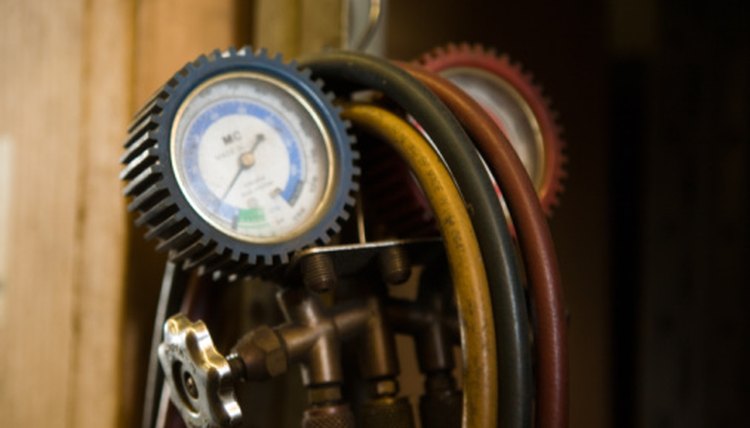How to Measure the Pressure in a Sports Ball

The official gauge pressure of an NFL football is 13 pounds per square inch, or psi. This measurement is important because it affects the size, weight and behavior of the ball when in the air and when it bounces on the field. For this reason, sports that use inflatable balls have official pressure standards to regulate the performance of the ball in the game. Even if your ball is not the official size, it will probably have a suggested pressure level, so you need to know how to measure its pressure to compare it to the manufacturer's recommended pressure levels.
Find the ideal pressure of your sports ball. Often this is printed on the actual ball, normally around the inflating valve. Note that the pressure level recommended by the manufacturer may not be the same as the official pressure levels set by your sport's regulations. For example, many soccer ball manufacturers suggest a pressure of 6 to 8 psi, but the sport's regulations say the ball must have a pressure at sea level of 8.5 to 15.6 psi.
Moisten the needle of the hand pump. Moisten the valve opening of the ball. You can use water, petroleum jelly or your own saliva.
Insert the needle into the ball's valve. Ensure the needle is perpendicular to the surface of the ball. If you insert it at an angle, you could burst the ball.
Read the pressure level on the gauge of your hand pump. You can also use an air compressor pressure gauge, but make sure the gauge is sensitive enough to measure the pressure range you require for your ball.
Compare your result with your target pressure level, and inflate or deflate your ball accordingly.
Tips
Ensure that your gauge and your reference pressure levels use the same units of measure. Depending on where you live and the type of gauge you are using, the gauge could measure pressure in bars, psi or Pascals.
Warnings
Do not over-inflate or under-inflate your sports ball or you could alter its structure.
References
Tips
- Ensure that your gauge and your reference pressure levels use the same units of measure. Depending on where you live and the type of gauge you are using, the gauge could measure pressure in bars, psi or Pascals.
Warnings
- Do not over-inflate or under-inflate your sports ball or you could alter its structure.
Writer Bio
Andrew Latham has worked as a professional copywriter since 2005 and is the owner of LanguageVox, a Spanish and English language services provider. His work has been published in "Property News" and on the San Francisco Chronicle's website, SFGate. Latham holds a Bachelor of Science in English and a diploma in linguistics from Open University.
